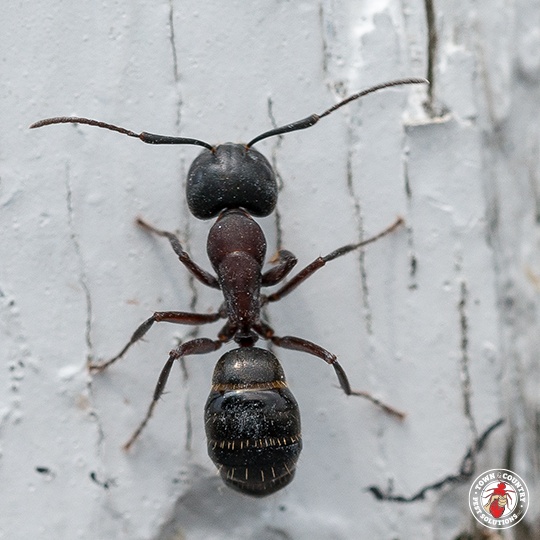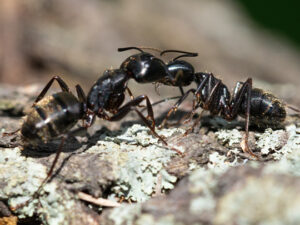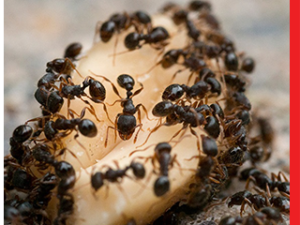
Ants may look small and harmless, but when they march into your home uninvited, they can quickly become a big nuisance. Whether they’re swarming your kitchen for crumbs or sneaking into your pantry, an ant infestation can be frustrating and difficult to contain. The good news? With the right steps, you can keep ants out of your home for good.
This blog will guide you through why ants invade, how to prevent infestations, and effective methods to get rid of them. By the end, you’ll be armed with practical solutions for keeping your home ant-free and welcoming only for your family and friends.
Why Do Ants Invade Homes?
To successfully prevent ants, it’s important to understand why they come indoors in the first place. Ants invade homes mainly in search of two things: food and shelter.
- Food Sources
Ants are attracted to sugars, proteins, and even grease. Crumbs on the floor, an open box of cereal, or even spills you forgot to clean can draw their attention. Colonies often send scout ants into homes to locate food, leaving behind a scent trail to guide others. This is why the problem escalates quickly once ants find food.
- Shelter and Water
During hot or rainy seasons, ants may seek refuge inside your home for protection from harsh weather. They also need water to survive, making your kitchen sink, pet bowls, or bathroom an inviting spot for colonies.
Understanding these triggers is the first step to keeping ants out. Now, let’s move on to prevention strategies.
How to Prevent Ants From Entering Your Home
Prevention is key when it comes to dealing with ants effectively. Making your home less attractive to them can save you considerable frustration down the line. Here’s how to do it:
1. Eliminate Food Sources
-
-
- Clean Frequently: Wipe down counters, tables, and other surfaces after every meal to remove crumbs and spills. Don’t forget to sweep or vacuum floors!
- Seal Food Storage: Store food in airtight containers, especially sugary items like honey, cereals, and snacks.
- Cover Trash Bins: Open trash cans are an ant magnet. Use bins with tight-fitting lids and empty them regularly.
- Clean Pet Feeding Areas: Ants are just as interested in pet food as human food. Remove bowls once pets have finished eating and clean up excess food.
-
2. Seal Points of Entry
Ants can find their way inside through the smallest cracks.
-
-
- Inspect Door and Window Frames: Use weather stripping or silicone caulk to seal gaps around doors, windows, and where pipes enter your walls.
- Check Baseboards and Walls: Look for tiny cracks and patch these up to block entryways.
- Install Screens: Use fine mesh screens for windows and ventilation areas to prevent ants from crawling in.
-
3. Keep Your Home Dry
Wet or damp areas encourage ants to stay.
-
-
- Fix Leaks: Repair leaky faucets, pipes, or poorly draining dishwashers.
- Improve Ventilation: Use dehumidifiers in damp areas like basements and bathrooms to reduce moisture.
-
4. Remove Outdoor Attractions
-
-
- Clear the Perimeter: Ants often travel from outdoor nesting areas. Keep plants, shrubs, and mulch at least one foot away from your home’s foundation.
- Trim Vegetation: Overgrown branches that touch your house act as a “bridge” for ants to enter.
- Move Firewood: Store firewood at least 20 feet away from your home since it can serve as a nesting ground.
-
By combining these strategies, you’ll make your home less appealing to ants and proactively prevent infestations.
What To Do If Ants Have Already Invaded
Sometimes, despite your best efforts, ants manage to slip through. Here’s what to do if you notice ants inside:
1. Identify the Type of Ant
Different types of ants require different treatments. Common household ants include:
-
-
- Sugar Ants: Attracted to sweet food items.
- Carpenter Ants: Often found in damaged wood.
- Odorous House Ants: Produces a strong odor when crushed.
-
Knowing the type of ant will help you target them more effectively.
2. Follow the Trail
Ants usually follow a trail to food sources. Trace the ants back to their point of entry so you can seal it off and treat the area.
3. Set Ant Baits
Ant baits are one of the most effective home remedies. These work by attracting ants to poisoned food, which they bring back to their colony. Over time, this eliminates the entire population.
4. Use Natural Remedies
-
-
- Vinegar Spray: Mix equal parts white vinegar and water in a spray bottle. Use it to clean surfaces and ant trails. Vinegar disrupts their scent-tracking abilities.
- Lemon Juice: Apply fresh lemon juice along entry points; ants dislike the acidic smell.
- Essential Oils: Peppermint and tea tree oils are natural repellents. Dilute with water and spray around windows, doors, and baseboards.
-
5. Try Chemical Solutions
If the infestation persists, consider using commercial ant sprays or insecticides. Be cautious when using these around children and pets, and always follow the label instructions.
6. Contact Pest Control
For severe infestations, it’s best to call pest control professionals. They have the expertise to assess the situation and ensure the problem is addressed thoroughly.
Building Long-Term Ant Defense
Once you’ve removed the ants and sealed your home, it’s important to maintain protection to keep future infestations at bay. Practicing the prevention steps regularly, combined with periodic inspections, will ensure your home stays ant-free.
Additionally, being mindful of seasonal changes can help you stay ahead. Early spring is often when scout ants begin searching, so double down on preventative measures during this time. By staying one step ahead, you can stop infestations before they begin.
Create an Ant-Free Home Today
Keeping ants out of your home is all about vigilance, cleanliness, and sealing entry points. Whether you’re dealing with an existing infestation or acting preemptively, these strategies will help you maintain an ant-free, comfortable living space.
Now that you know how to tackle ants effectively, take charge of your home! Start implementing these tips today, and enjoy a cleaner, pest-free environment.











